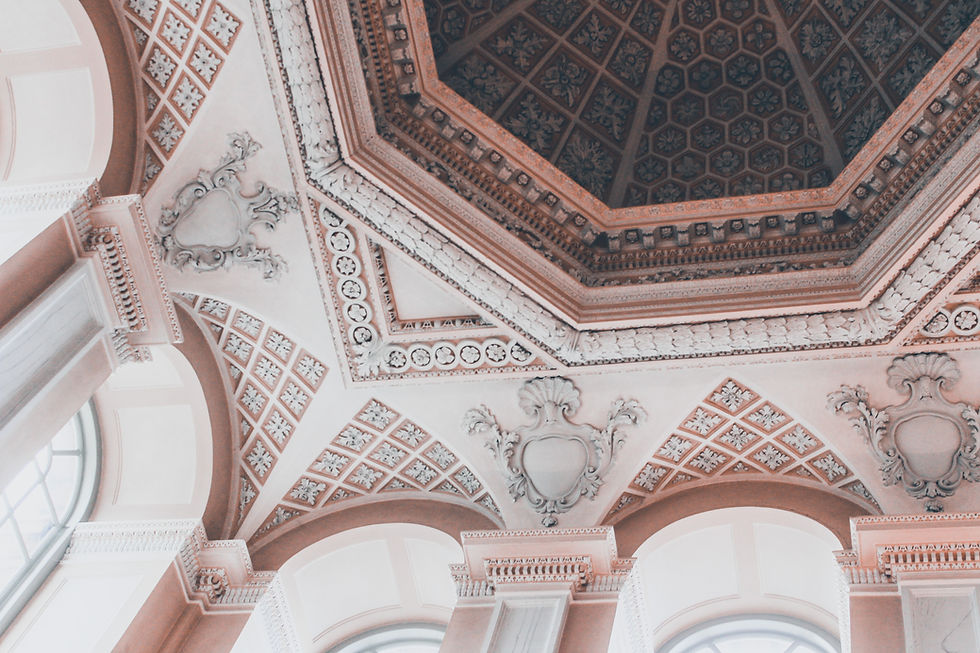Mathematics in Architecture
- Ms. Elriza Taljaard

- Jan 18, 2023
- 4 min read
Updated: Jun 11, 2023
When most people think of architecture, they likely envision grand, sweeping buildings with intricate details and impressive feats of engineering. But what many may not realize is that behind every stunning architectural masterpiece lies a foundation of mathematics. From ancient pyramids to modern skyscrapers, math has played a crucial role in the design and construction of some of the world's most iconic buildings.

As the famous Swiss-French architect, Le Corbusier, once said, "Architecture is the masterly, correct, and magnificent play of masses brought together in light. Our eyes are made to see forms in light; light and shade reveal these forms; cubes, cones, spheres, cylinders, and pyramids are the great primary forms which light reveals to advantage." And what is the language of forms? Mathematics.
One of the most important mathematical concepts in architecture is geometry. From the simple shapes of squares and triangles to the more complex forms of polygons and curves, geometry provides architects with the tools they need to create visually striking and structurally sound buildings. The famous Parthenon in Athens, for example, is a perfect example of how geometry was used in ancient architecture. The Parthenon was built in the 5th century BCE, and it is considered one of the most iconic and well-preserved ancient buildings in the world. The building's columns and entablature are all based on the golden ratio, a mathematical proportion that has been found to be aesthetically pleasing to the human eye.
"Architecture is the masterly, correct, and magnificent play of masses brought together in light. Our eyes are made to see forms in light; light and shade reveal these forms; cubes, cones, spheres, cylinders, and pyramids are the great primary forms which light reveals to advantage." - Le Corbusier
A very important mathematical concept in architecture is proportion. The use of proportion can be seen in many famous buildings around the world, such as the Notre Dame Cathedral in Paris and the Great Pyramid of Giza. These buildings were designed using mathematical ratios to ensure that they appear balanced and harmonious. Architects have long used basic geometric shapes and principles to create harmonious and symmetrical buildings. Take the Great Pyramid of Giza for example, one of the most iconic and well-preserved ancient buildings in the world. The pyramid, built around 2560 BCE, is a perfect example of how geometry was used in architecture. The pyramid's base is a square, and its four sides slope upward to a point, creating a perfect pyramid shape. The pyramid's symmetry is not only aesthetically pleasing, but it also served a practical purpose. By using geometry, the ancient Egyptians were able to create a structure that was stable, durable, and could withstand the forces of nature.
In modern architecture, mathematics plays an even more important role. The use of computer-aided design (CAD) software has allowed architects to create highly complex and precise designs that would have been impossible to achieve by hand. The program can be used to create three-dimensional models of a building, and it can also be used to simulate the movement of light, sound, and heat through a building. The Burj Khalifa in Dubai, currently the tallest building in the world at 828 metres, is a perfect example of how mathematics and technology have come together to create an architectural marvel. The building's design was created using advanced mathematical algorithms and computer simulations, which helped to ensure that it would be structurally sound and able to withstand the high winds and extreme temperatures of the desert environment.
Mathematics in architecture isn't just limited to the design phase. Mathematics also plays a crucial role in the construction of buildings. From the use of trigonometry to calculate the angles of a roof to the use of calculus to optimize the use of materials, math is an essential tool for builders and engineers. One of the most famous examples of how trigonometry was used in architecture is the Eiffel Tower. The Eiffel Tower was built in 1889 for the 1889 World's Fair in Paris. The tower is an impressive 324 meters tall, and it was built using trigonometry to calculate the angles of the tower's legs and the slope of its stairs.
One of the most interesting examples of math in construction can be seen in the Sagrada Familia, a famous church in Barcelona, Spain. The church's architect, Antoni Gaudi, used a technique called "catenary arch" to create the church's unique curved shapes. A catenary arch is a type of arch that is shaped like a hanging chain, and it can be modeled using a mathematical formula. Gaudi used this technique to create the church's stunning vaults and arches, which are both structurally sound and visually stunning.
"The mother art is architecture. Without an architecture of our own we have no soul of our own civilization." - Frank Lloyd Wright
In conclusion, mathematics and architecture have been intertwined for centuries. From the ancient pyramids to the modern skyscrapers, math has played a crucial role in the design, construction and aesthetic of buildings. As the famous architect, Frank Lloyd Wright said "The mother art is architecture. Without an architecture of our own we have no soul of our own civilization." From the use of geometry, proportion, computer-aided design, trigonometry, and calculus, math has been the backbone of architecture, shaping the world we live in today.













Comments